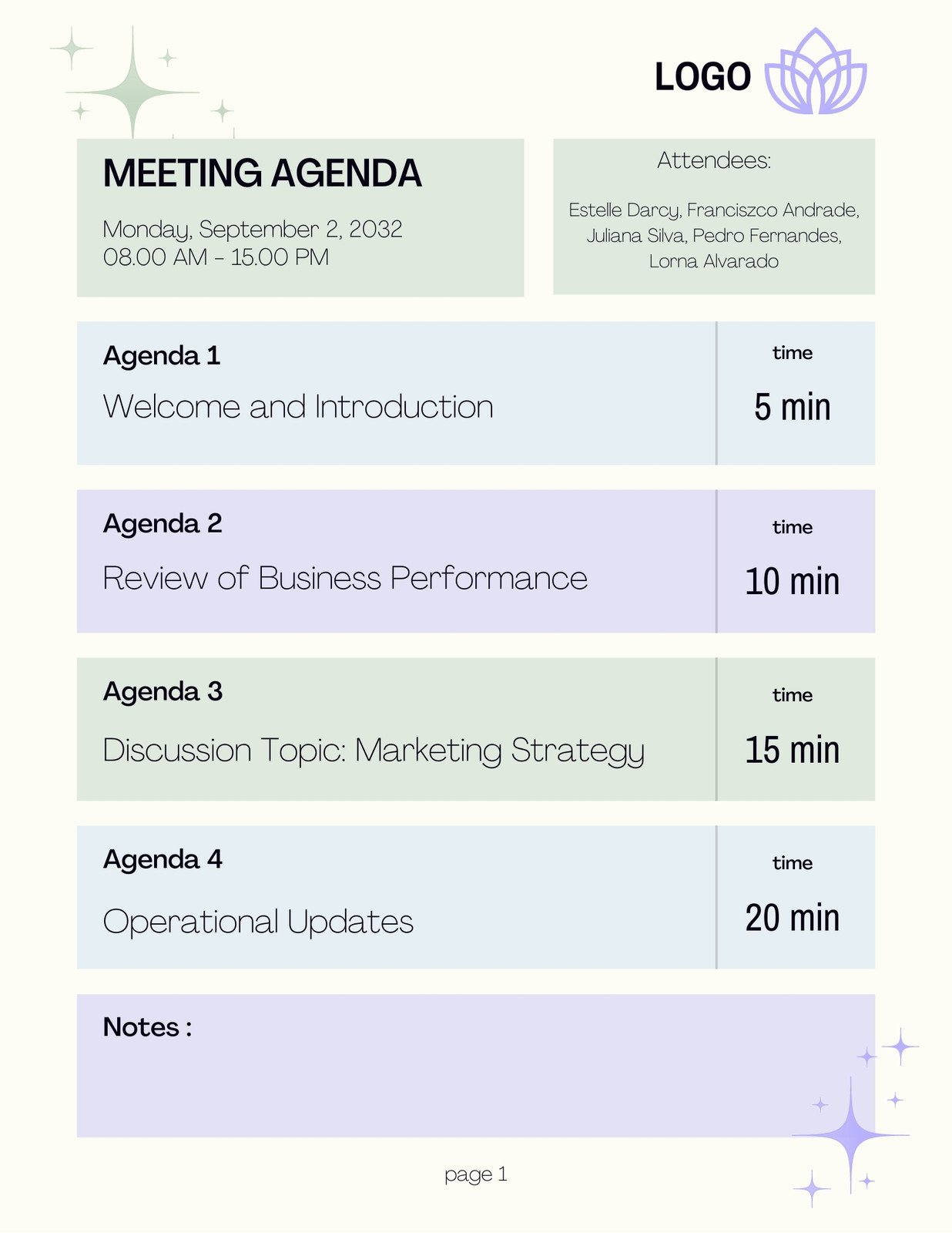Introduction
Ever found yourself in a meeting that felt like it was going nowhere fast? A poorly structured agenda can be a major culprit. A well-crafted agenda sets the tone for a productive meeting, ensuring everyone is on the same page and that time is used efficiently.
Why is an Agenda Important?
Keeps everyone focused: A clear agenda helps participants stay on track and prevents discussions from veering off topic.
Creating a Meeting Agenda: A Step-by-Step Guide

Image Source: canva.com
1. Determine the meeting’s purpose: What do you want to achieve by holding this meeting?
2. Identify key topics: What are the main points you need to discuss?
3. Set time limits: Allocate specific timeframes for each agenda item to ensure efficient use of time.
4. Assign responsibilities: Determine who will lead each discussion or present on specific topics.
5. Send the agenda ahead of time: Distribute the agenda to all participants well in advance so they can prepare.
Sample Meeting Agenda Template
Meeting Title: [Meeting Title]
Date: [Date]
Time: [Time]
Location: [Location]
Attendees: [List of attendees]
1. Welcome and Introductions (5 minutes)
2. Review of Previous Meeting’s Minutes (10 minutes)
3. [Topic 1] (30 minutes)
4. [Topic 2] (20 minutes)
5. [Topic 3] (15 minutes)
6. Open Discussion (10 minutes)
7. Next Steps and Action Items (5 minutes)
8. Adjournment
Tips for Effective Agendas
Keep it concise: Avoid overwhelming participants with too many agenda items.
Conclusion
A well-crafted meeting agenda is essential for conducting productive and efficient meetings. By following the steps outlined above and incorporating the tips provided, you can create agendas that help your team achieve its goals.
FAQs
1. How often should I send out a meeting agenda? It’s generally best to send out the agenda at least a few days before the meeting to give participants time to prepare.
2. What should I do if a meeting runs over time? If a meeting is running over, consider cutting short or postponing less critical agenda items.
3. How can I encourage participation in my meetings? Create a welcoming and inclusive atmosphere, ask open-ended questions, and encourage everyone to share their thoughts.
4. What should I do if someone dominates the conversation? Politely interrupt and redirect the conversation back to the agenda.
5. How can I ensure that action items are followed through on? Assign specific individuals to each action item, set deadlines, and follow up regularly to check on progress.
Meeting Agenda Template